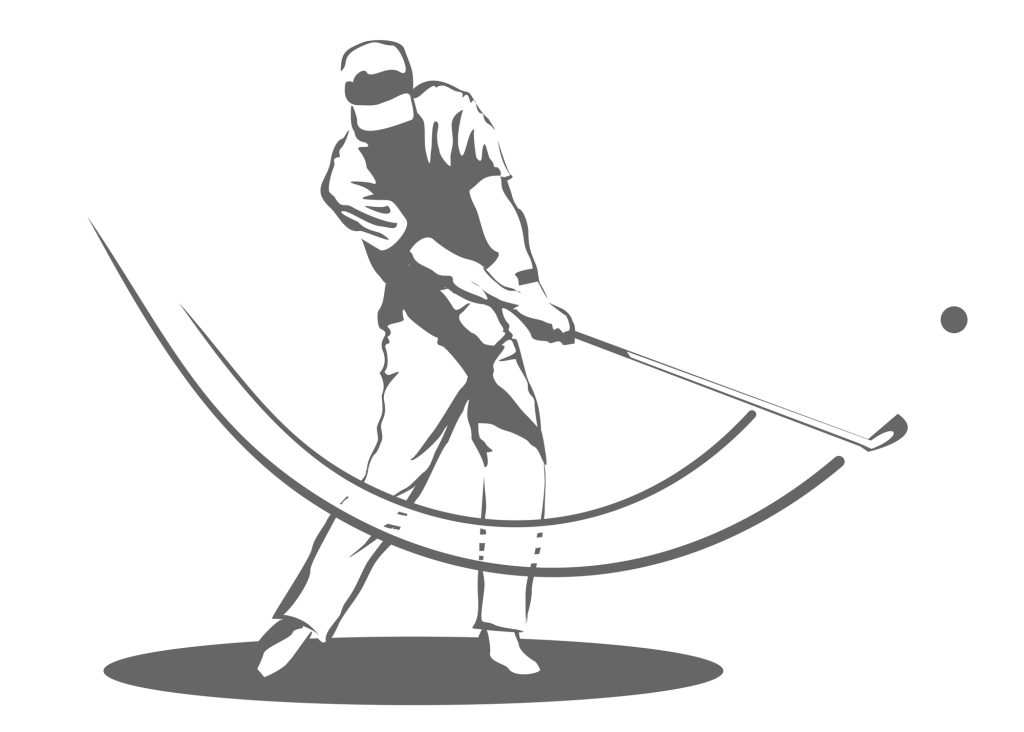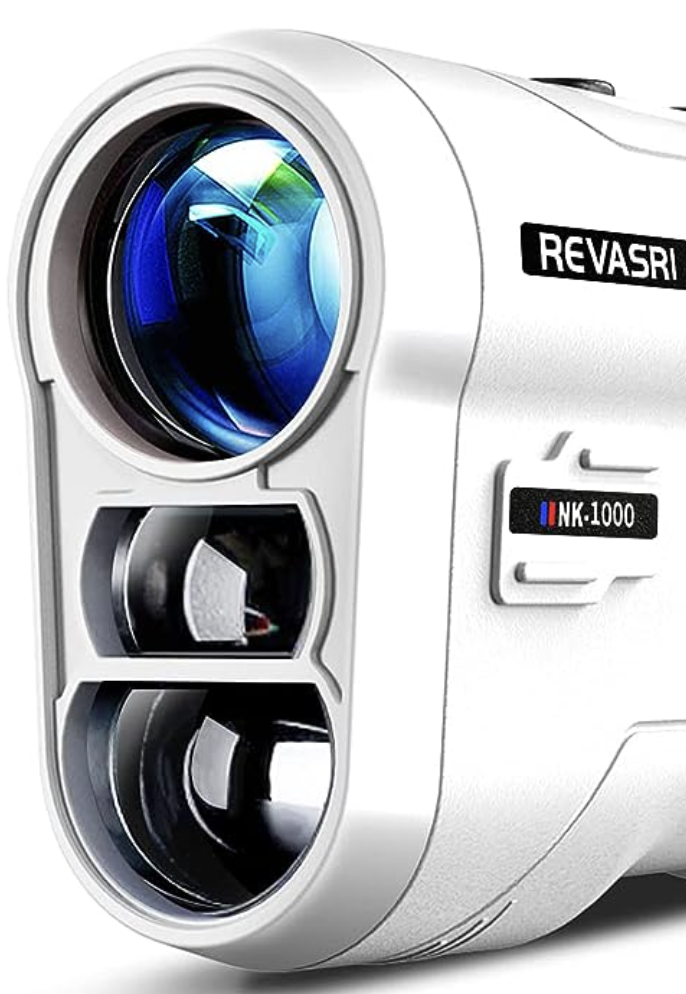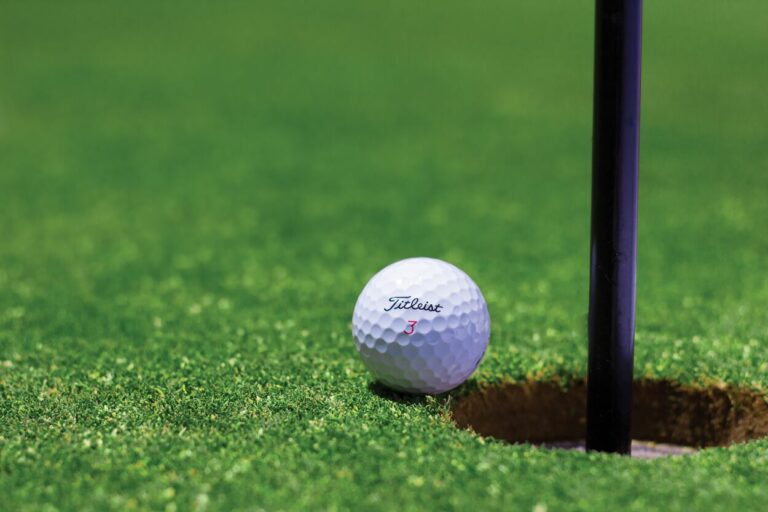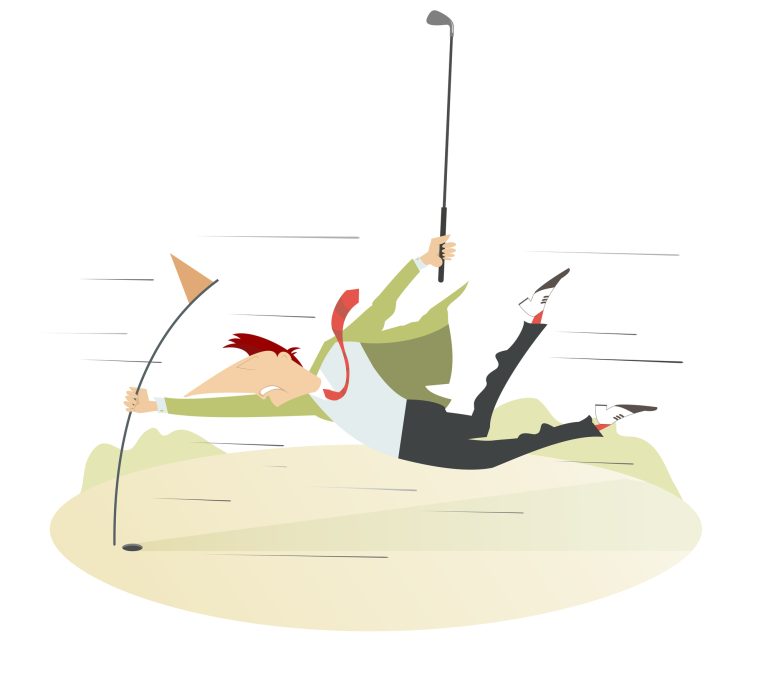Why Does My Golf Ball Nose Dive? (and how to fix)
All golf shots are all unique (especially mine), and no matter how much I practice, how much I perfect my swing, I am still able to get a ball to nose dive now and then. But what causes the golf ball to nose dive?
Typically, a golf ball will nose dive after you strike it because of a forward spin on the golf ball. Other factors include your stance, the club, your striking power, the wind, rain, and other elements. These things can contribute to a shot to nose dive or something similar.
For golf shots, you want to get to the root cause of a problem and how can you correct it?
So if you are consistently getting a nose dive in your shot, this article will explain piece by piece how to identify and fix once and for all.

Why do shots nose dive?
The short answer to why golf shots nose dive is that you hit the top of the golf ball.
This causes the golf ball to move forward, and raise very low, with a forward spin, so that over time, it will just go down into the ground.
The nose dive is because of how you are striking the ball off of the tee with your wood, or off with your iron.
There are a multitude of factors that can cause a golf shot to take a nosedive. You need to look at a few things when you are taking a swing at a golf ball.
The first thing you need to look at is your stance. How are your feet settled? Are you straight on with the ball?
How about the grip that you have over the golf club itself? Backspin is also critical, as is the golf club that you are choosing.
The main reason the golf ball is taking a nosedive is because of the way you are hitting the golf ball. The shot at the golf ball is striking at the top half of the ball. When you strike the golf ball here, it is going to cause it to fly off of the tee or the ground, but in a low trajectory.
It will fly off of the location with velocity, but the forward spin on the ball is going to cause it to fly low, and eventually nose dive into the ground.
You need to get under the ball when you swing so that you have a positive spin that carries the ball forwards in flight, not the opposite.

of Callaway ERC Triple
Track Golf Balls for
yourself or your buddy!
What are Duck Hooks or Snap Hooks?
The terms duck hook or snap hook are the same in the golf world. A duck hook or a snap hook are both awful shots that you can hit in the game of golf.
The term is going to be in line with a ball that will turn sharply and quickly right into the ground.
After you hit the ball, if it pops up and then nose dives into the ground, you have done a duck hook.
- For a golfer that is right-handed, the duck hook will start straight and go for a few yards to the front of you. It will then dive to the left of you.
- For a left-handed golfer, the duck hook or snap hook will do the opposite. When the diving of the ball begins to happen for a left-handed golfer, it will go to the right of you.
The duck hook or snap hook gets its name because it quickly pops up off of the tee or wherever you are hitting it from.
The snap action is instant, as it pops forward. It will then die right out of the sky like a duck, hence the duck hook name.
The combination of these two terms, making them interchangeable, makes this a terrible and frustrating shot in golf.
Why do Duck or Snap Hooks Happen?
You likely want to figure out how to stop a duck or a snap hook from happening. In order to do this, you need to start out by understanding what is the root cause of the problem, to begin with.
When you know how a duck or a snap hook takes place, you will isolate the problem.
The two key areas of concern with a duck hook or a snap hook include the spin and the face of the spin.
A duck hook or a snap hook is bad-looking as it is spinning rapidly.
The spin is rapid and forward, causing it to dive to the ground speedily. The other problem is the face of the club.
When you have the face of the club closed in on the ball, you are going to strike it in a way where the negative spinning action is likely to occur.
This will create the duck hook or the snap hook action.

and apparel.
gear, accessories and apparel. (affiliate link)
How to Stop Hitting Duck or Snap Hooks? (fixing your grip)
In order to stop hitting a duck or snap hook, you need to focus on a few things:
- The angle of the face of the club when you make an impact.
- Assure your ball placement prior to impact is closer to the hole so that you are hitting the ball “up” after you have reached the lowest point of your swing.
- Fix your grip, it is likely too “strong”. Make sure that you have a weaker grip by rolling your top hand so that you can see two to three of your knuckles.
- Allow your wrists to “snap” when your swing reaches its lowest point.
- Be rested. You will naturally tire out throughout a round, so rest your muscles and bones to assure you are fresh enough to not allow your mechanics to worsen as the round goes on.
Of the things mentioned, the most important thing is to adjust your grip and angle of impact.
Try not to top off the ball and strike it while going up.
Final Thoughts
A golf ball typically noses dives after you hit it because of a forward rotation of the golf ball. Other factors include your footwork, your stance, the club you’re using, the weather, the wind, and other elements.
These things can cause nose dives or something similar.
I have found that I struggle more with this when I am tired. This usually starts to happen for me for holes 15-18 rather than the first 14.
One thing that I used to help with this particularly is Rotary Swing. It helps with making sure that you keep as much energy by being a little more fit. Check it out by clicking here.





